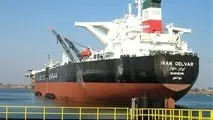Europe’s smooth transition from single to double hull barges in 2018

Heightened safety standards that will mean an end to single hull barges in Europe from 2018 has left barge operators with little to no choice but to upgrade or reinvest in a fleet with double hulls.
The swift uptake of double hull barges, gearing up toward the 2018 deadline, has been an effort led by the oil majors that have ruled out single hulls altogether when trading in and around the Amsterdam-Rotterdam-Antwerp barge market. Restrictions on single hulls calling at certain major refiners’ ports and terminals have also played a role in pressuring a market-wide shift to double hulls in advance of the official deadline.
Single hulls in the market make around 28% of the market share, with double hulls accounting for the remainder, figures sourced by Edwin van Hassel at the University of Antwerp from the European Barge Inspection Scheme showed.
“The majors have a lot of power. By [the oil majors] not accepting single hull barges a lot of new [double hulls were built]. Capacity grew a lot,” van Hassel said.
Exceptions remain as certain market conditions may limit operations with double hulls and favor those with single hulls. Charterers will also exercise their freedoms to charter single hulls up until 2018, where freight rates are more favorable.
SEGMENTS OF THE MARKET SLOWER TO SWITCH
The reality of switching to the double hull standard is widely accepted, but there are certain waterways where stricter restrictive drafts and low-level bridges makes the use of double hull barges a little more cumbersome.
Single hulls predominantly fall under the smaller draft category, making them more convenient for tougher barging conditions.
EBIS data showed most single hulls mostly fall within the smaller vessel size categories, where approximately 64% of single hulls have a Length Overall (LOA) measure of less than 86 meters, while only 36% of double hulls fall within this small vessel size grouping. LOA is a key measure that helps to express the overall size of the ship.
The use of a smaller vessel, in particular single hulls, may be warranted when water levels reach extreme levels, as they are better suited to operating under these conditions and could carry a larger load, thus being more cost effective.
“Problem will be low water situations, like we have seen in the last two years,” a barge trader said. “Then, with only double hull barges [in 2018], the point where you cannot ship anymore, will be there much more often due to draft [issues].” “With Kaub [water levels] at 40 cm, like we have seen in the last two years…a handful [of] single hull barges were still in operation to supply the Swiss [market…] whereas double hull barges were not running anymore.
Operations were better [with single hulls],” the trader said.
Another trader in Northwest Europe said “for me, the issue isn’t subject to the single and double hulls [when Rhine levels are low], it’s more about the size of the vessel.”
SCRAPPING SINGLE HULLS
As part of the double hull standardization, the likely fate of the leftover single hull fleet will depend on certain factors.
Certain charterers have strict age restrictions, and since the average age of single hulls is higher, with most built in the 1970s, this limits the benefits of upgrading these single hulls to double hulls.
Therefore in many cases, it would warrant scrapping single hull barges instead, and building double hulls from scratch.
“It [does not make sense] to upgrade the old barges to double hull because of the financial input,” a third barge trader said.
Double hulls, in comparison, were mostly built in the last two decades.
Furthermore, they are better built and more compact than the older single hulls, the third trader added.
Fully replacing single hulls with double hulls will take time, and many expect a slight shortfall in operational barges come 2018.
Since the transition to double hulls is already underway, any supply pressures will be evident during period of stronger demand.
“It depends on the market situation. I guess in the middle of the year [2017] with higher demand, we will see a first indication for next year regarding the usable numbers of barges. But I have already heard that some shipowners already see some shortages on barges for next year,” a third trader said.
Gasoline already trades selectively on double hulls in the ARA region, but distillates will be the one to follow once the regulations are enforced.
While traders force some market tightness initially due to the lack of available double hulls, the general consensus is that barge operators have received fair warning and the timeline has been sufficient for the shipping industry to respond in time.



